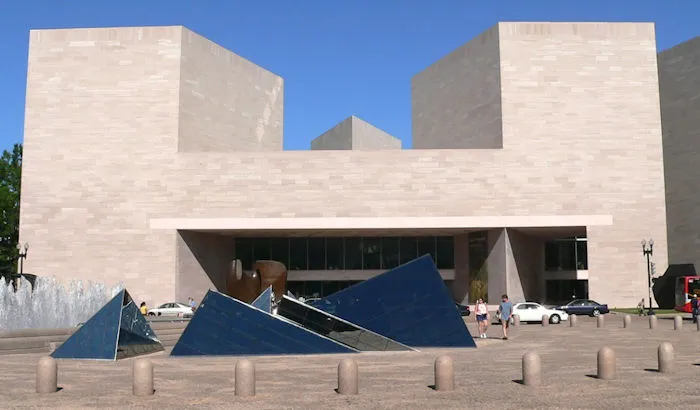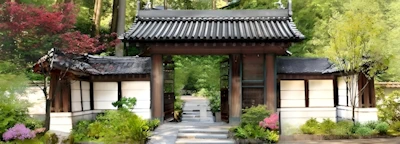Historic Exhibition of 16 Centuries of Animals in Japanese Art Will Showcase Masterpieces That Rarely Leave JapanNEW
Other Events At This Location
National Gallery of Art
This Specific Event Date Has Passed


- No Additional Dates.
Washington, DC 20565
Washington, DC-Artworks representing animals-real or imaginary, religious or secular-span the full breadth and splendor of Japanese artistic production. Today, the National Gallery of Art, Washington, announced The Life of Animals in Japanese Art, the first exhibition devoted to the subject, covering 16 centuries (from the sixth century to the present day) and a wide variety of media-sculpture, painting, lacquerwork, ceramics, metalwork, textile, and the woodblock print. On view from May 5 through July 28, 2019, the exhibition will feature 315 works, drawn from 66 Japanese and 30 American public and private collections. The artists represented range from Sesson Shūkei, Itō Jakuchū, Soga Shōhaku, Katsushika Hokusai, Utagawa Kuniyoshi, to Okamoto Tarō, Kusama Yayoi, Issey Miyake, Nara Yoshitomo, and Murakami Takashi.
Many of the nearly 180 works traveling from Japan are masterpieces that rarely-if ever-leave the country, including seven designated as an Important Cultural Property by the Japanese government. Three of the registered artworks are from the Tokyo National Museum: the six-foot-tall Monju Bosatsu Seated on a Lion, with Standing Attendants (1273) by the Buddhist sculptor Kōen; the intricately carved wood Buddhist sculpture Aged Monkey (1893) by Takamura Kōun; and the Footed Bowl with Applied Crabs (19th century) by Miyagawa Kōzan I. Two are on loan from the Nara National Museum: a hanging scroll, Sword with Kurikara Dragon and Two Child Acolytes (13th century); and a Buddhist hanging scroll, Fugen Enmei (13th century). Finally, the wood sculpture Fugen's Elephant (13th century) is on loan from a private collection, and a spectacular bronze, Deer Bearing Symbols of the Kasuga Deities (14th century), is on loan from the Hosomi Museum, Kyoto.
This historic exhibition is co-organized by the National Gallery of Art, Washington, the Japan Foundation, and the Los Angeles County Museum of Art (LACMA), with special cooperation from the Tokyo National Museum, and curated by Robert T. Singer, curator and department head, Japanese art, LACMA, and Masatomo Kawai, director, Chiba City Museum of Art, in consultation with a team of esteemed historians of Japanese art. LACMA is presenting an abbreviated version of the exhibition, titled Every Living Thing: Animals in Japanese Art from September 8 through December 8, 2019. The Gallery's presentation of the exhibition, covering 18,000 square feet in the East Building Concourse, is organized into thematic sections that explore the various roles animals have played in the art of Japan. A fully illustrated catalog is being published in association with Princeton University Press.
"The Gallery is honored to partner with the Japan Foundation and LACMA to present the first exhibition to consider the representation of animals across the history of Japanese art," said Earl A. Powell III, director, National Gallery of Art. "It is a privilege to work with the Japan Foundation to share these Japanese masterpieces with American audiences, and we are grateful to the Foundation for making this incredible group of loans possible. As the largest single Japanese lender, the Tokyo National Museum has also played a significant role in this exhibition and we are pleased to welcome nearly 30 works from the Museum's unparalleled collection."
"The Japan Foundation creates global opportunities to foster friendship, trust, and mutual understanding through culture, language, and dialogue, to cultivate friendship and ties between Japan and the world. We believe this is a basis for building a truly peaceful and rich world," said Hiroyasu Ando, president, the Japan Foundation. "To achieve this mission, the Japan Foundation has organized numerous cultural events around the world and in the U.S. Among them, the upcoming exhibition of The Life of Animals in Japanese Art is one of the most ambitious and creative projects, and will display artworks of high quality for everyone's enjoyment. One may call these works of art-created through long, close interactions between animals and Japanese people over 1,500 years-a gift from humans to animals. I very much look forward to sharing this gift with our American friends."
Exhibition Support
The exhibition is made possible through the generous support of the E. Rhodes and Leona B. Carpenter Foundation. Additional funding is provided by The Exhibition Circle of the National Gallery of Art.
Exhibition Organization and Curators
The exhibition is co-organized by the National Gallery of Art, Washington, the Japan Foundation, and the Los Angeles County Museum of Art, with special cooperation from the Tokyo National Museum.
The exhibition's curators Robert T. Singer, curator and department head, Japanese art, LACMA, and Masatomo Kawai, director, Chiba City Museum of Art, worked in consultation with a team of esteemed historians of Japanese art: Ryusuke Asami, chief curator sculpture, Tokyo National Museum; Masaaki Arakawa, professor, Gakushuin University; Hiroyuki Kano, former professor, Doshisha University; Mika Kuraya, chief curator, Museum of Modern Art, Toyko; Yasuyuki Sasaki, curator, Suntory Museum of Art; Tomoko Matsuo, curator, Chiba City Museum of Art; Nobuhiko Maruyama, professor, Musashi University; and Hiroshi Ikeda, honorary researcher, Toyko National Museum.
Exhibition Dates
National Gallery of Art, Washington, May 5-July 28, 2019
Los Angeles County Museum of Art, September 8-December 8, 2019
Exhibition Highlights
The Life of Animals in Japanese Art takes an expansive look at the representation of animals in a variety of art forms including painted screens, hanging scrolls, woodblock prints, netsuke, ceramic plates, kimono, and samurai helmets. The selection portrays all types of creatures-from foxes and frogs, snakes and sparrows, to mythical animals such as dragons, phoenixes, and kappa river sprites. To explore the many roles animals have played in Japanese culture, objects are divided into eight sections: Ancient Japan;The Japanese Zodiac; Religion: Buddhism, Zen, Shinto; Myth and Folklore; The World of the Samurai; The Study of Nature; The Natural World: Creatures on Land, in the Air, and in Rivers and Seas; and The World of Leisure.
Since antiquity, animals have held spiritual and symbolic significance in Japanese culture, as evidenced by haniwa, ancient clay sculptures that were placed around gravesites, possibly to protect the dead in the afterlife. A sixth-century haniwahorse on loan from LACMA-standing nearly four feet tall-is one of the largest known sculptures of this animal from the period. In Buddhism, Shinto, and Zen, artworks depicting animals were commonly given places of prominence in temples and shrines according to the creatures' divine duties. For instance, Shinto deer were revered as messengers to-or even stand-ins for-the gods, as illustrated by the 15th-century Kasuga Deer Mandala, on loan from the Art Institute of Chicago.
The allegorical power of animals is not limited to the spiritual realm; they carry many meanings in secular works of art as well. Objects portraying the Japanese zodiac animals individually were commonly collected as symbols of an individual's identity. Even rarer are works that depict all 12 animals of the zodiac together. The exhibition includes several examples: a set of 19th-century woodblock prints by Utagawa Kuniyoshi on loan from the Arthur M. Sackler Gallery, a finely embroidered 19th-century Kosode with the Twelve Zodiac Animals on loan from the National Museum of Japanese History, and a remarkable mid-to-late-19th-century netsuke by Kaigyokusai Masatsugu on loan from LACMA, with all 12 zodiac animals intertwined in one small piece of carved ivory.
Animals were popularly described in myth and folklore in anthropomorphic terms, often as a means of disguising social critiques. One of the most well-known works in the exhibition is a scene from the handscroll Frolicking Animals (12th-13th century), on loan from the collection of Robin B. Martin, courtesy of the Brooklyn Museum. Long attributed to the Buddhist monk Toba Sōjō, the scene depicts monkeys, a rabbit, and a deer as protagonists in a thinly veiled satire of priests. Humans also adopted the form of, or decorated themselves with, animals for their symbolic energy. Samurai commonly wore armor decorated with dragons or helmets in the shapes of rabbit ears, deer antlers, or the mythological shachihoko, which has the head of a tiger and body of a carp.
In the 18th and 19th centuries, artists developed an interest in the study of the natural world and thus in drawing individual animals directly from life. Inspiration for most images of animals had previously come from earlier examples in art. Whereas Itō Jakuchū painted with lifelike detail every barb in every vane of a feather in Pair of Cranes and Morning Sun(c. 1755-1756), on loan from the Tekisuiken Memorial Foundation of Culture, while Utagawa Hiroshige carved every scale of a seabream in A Shoal of Fishes, his 19th-century woodblock print series on loan from the Harvard Art Museums/Arthur M. Sackler Museum. Many artists depicted numerous animals within a single species in order to convey their auspicious meanings. An elaborate formal kimono like the 19th-century Uchikake with Phoenix and Birds, on loan from the Kyoto National Museum, would have brought its wearer good luck, while giving someone a hanging scroll like One Hundred Rabbits (1784) by Maruyama Ōkyo, on loan from a private collection in Japan, conveyed a wish for prosperity and plenitude.
Contemporary artworks spread throughout the exhibition demonstrate the influence of traditional representations of animals on the work of living Japanese artists. The medieval Deer Bearing Symbols of the Kasuga Deities is installed alongside Kōhei Nawa's PixCell-Bambi 14 (2015), while Kusama Yayoi's polka-dotted three-dimensional dogs are in conversation with haniwa animals, illustrating the similarities in their forms and expressions. On loan from the Broad Art Foundation, Murakami Takashi's 82-foot-long vibrant painting In the Land of the Dead, Stepping on the Tail of a Rainbow (2014) was created in response to the 2011 earthquake and tsunami in Japan. Murakami drew inspiration from a series of scrolls on the 500 arhats, Buddhists who achieved enlightenment, created by Kanō Kazunobu over a ten-year period that included the 1855 Edo earthquake. For his painting, Murakami embellished the background, arhats, and animals such as the shachihokowith his signature flourish and vibrant palette. Many of the works exhibited employ distinctly contemporary techniques to depict animals. Whimsical creations by designer Issey Miyake transform wearers into a starfish, a monkey, or a swallow. In a digital work, Chrysanthemum Tiger (2017), from the Tokyo-based collective teamLab's Fleeting Flower series, flowers and petals coalesce to form a moving image of a tiger which then dissolves, scatters, and takes shape again.
Disclaimer: Please double check all information provided on our platform with the official website for complete accuracy and up-to-date details.
Saturday, 18 May, 2019
All Dates For This Event
Event Contact
Event Organizer Website
Visit Organizer Website
Get More Details From the Event Organizer
Event Location Website
Visit Location Website
For More Location Details
Event Information Can Change
Always verify event information for possible changes or mistakes.Contact Us for Issues















